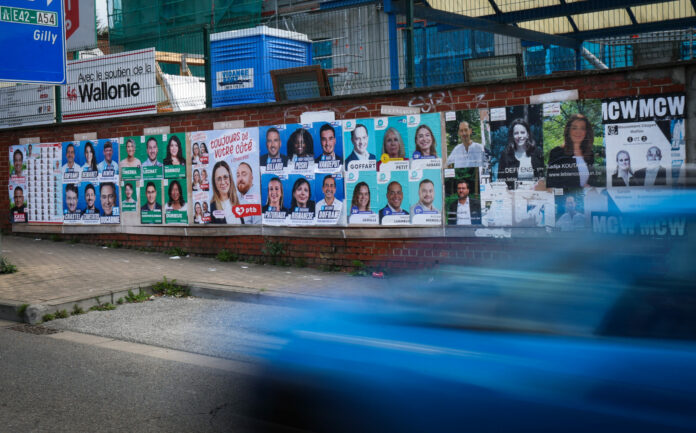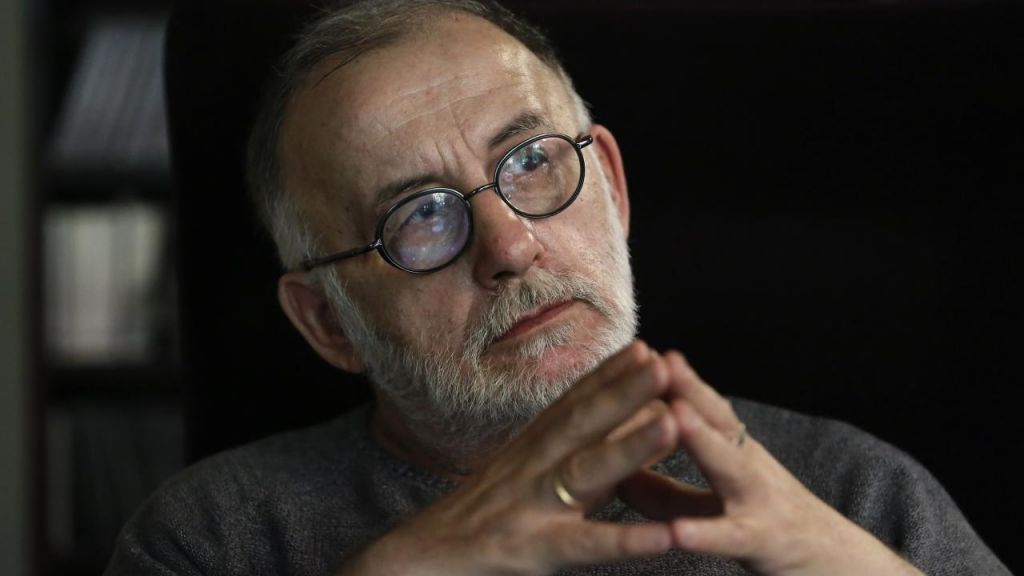Dirk Vanderstockt
On October 13, municipal and provincial council elections were held in Belgium, just four months after the June 9 regional and federal parliamentary elections (see more here).
While these elections are crucial for local politics, they also serve as an interim barometer for public sentiment regarding national policy. However, this measure is not entirely clear because the media tend to compare the results to the previous municipal elections in 2018, rather than to this year’s parliamentary elections. Some politicians, however, may choose to make that comparison during interviews if it appears more favorable to them.
A significant limitation of this “barometer” is that no new federal government has been formed since the June 9 elections, as coalition negotiations are still ongoing. Additionally, the newly formed regional governments have only recently started their work and have yet to implement substantial policies.
For these reasons, it appears that the events of the past four months have had little impact on the municipal election results. The winners in the municipal elections are largely the same as those in the June 9 elections.
In French-speaking Wallonia, the three largest parties are:
– The Liberals (MR)
– The Centrists (Les Engagés)
– The Social Democrats (PS)
In Dutch-speaking Flanders, the three largest parties are:
– N-VA (moderate nationalists)
– CD&V (centrists)
– Vlaams Belang (far right)
Negotiations
The June 9 elections delivered some unexpected results, most notably reflecting widespread dissatisfaction. This was evident in the significant voter absenteeism (12.5%) and a pronounced polarization, with growth for both the far right and far left.
The leaders of the N-VA had argued for years that Flanders consistently voted for right-wing parties, while Wallonia leaned left. They used this narrative to push for confederalism, seeking maximum autonomy for the regions. Strategists of the bourgeoisie have long exploited the national question as a tactic to divide and rule, aiming to stir up tensions between the regions for political advantage.
However, contrary to expectations, the vote in Wallonia in these elections mirrored the rightward shift seen in Flanders, with the centrists and liberals emerging victorious. This unexpected result led many bourgeois commentators to conclude that forming a federal government would be easier than anticipated. With the PS no longer positioned as a “left-wing obstacle”, it seemed that a restructuring agenda could proceed more smoothly.
Wallonia and Flanders
Political parties approached the situation with optimism, and by July 11, an agreement for a right-wing Walloon government was in place. The program, however, was vague, aiming to reduce the budget deficit through cuts to public services. While unemployment reduction was cited as a goal, the real policy involved pressuring the unemployed into accepting compulsory job offers, with potential sanctions for refusal. The coalition agreement was short on details, suggesting future disagreements between the partners.
In Flanders, the center-right did not secure a majority of seats, as the Flemish liberals, following their electoral defeat, opted to remain in opposition. This led to the inclusion of the Flemish Social Democrats in the government, who were enticed with promises of social measures.
As the media closely followed the negotiations, there was widespread speculation about whether a government would be formed before the municipal elections. Delays or leaks of government plans could have weakened the parties in power. After much wrangling, a deal was struck in Flanders at the end of September. The new government program was right-leaning but included some left-leaning concessions. Symbolic measures were designed to appeal to both N-VA voters (e.g., requiring immigrant parents to learn Dutch for better school integration) and Social Democrat supporters (e.g., increased funding for school meals).
Many aspects of the agreement remain unclear and seem to mask austerity measures. The education unions have already responded with protests, and the care sector is planning a demonstration in November.
Federal government
The formation of a federal government proved to be more challenging than anticipated, with five parties involved: the N-VA, both centrist parties, the Walloon Liberals, and the Flemish Social Democrats.
Complicating matters, the European Union is requiring Belgium to implement cuts of 27 billion Euros over the next 5 to 7 years. Despite this, the parties are pushing for increased defense spending and are reluctant to introduce a tax on the wealthy—an idea several parties had championed during the election campaign, following the example set by the left-wing PTB. This means that the financial burden will fall on workers, through measures such as increased VAT on basic products or cuts to social security.
Tensions rose between the Flemish Social Democrats, who demanded social measures for their voters, and the Walloon Liberals, who insisted the draft government program wasn’t right-wing enough. This led to a crisis atmosphere in the negotiations, and a pause was deemed necessary to avoid a total collapse in government formation, which would have been politically damaging ahead of the municipal elections.
The Social Democrats, who position themselves as left-wing despite aligning with right-leaning parties, sought to secure key measures for their base. They face significant challenges in parliament from opposition parties, including the left-wing PTB-PVDA, the two green parties, and their “brother party,” the Walloon Social Democrats. On the other hand, the Walloon Liberals were resistant to making concessions, pushing for a more conservative government program.
Amidst these tensions, a negotiating document was leaked, revealing a very right-wing policy proposal involving cuts to social security. This leak sparked public discussion, and trade union leaders voiced their opposition to it.
Local elections
Fearing electoral backlash during the municipal elections before their plans could even be implemented, all the parties agreed to focus on smaller issues and postpone major decisions until after October 13. With the municipal election campaign taking center stage, media attention shifted away from the federal government negotiations.
The parties involved in the federal government formation have largely achieved their goals: the major losers from the June elections suffered further losses, while the coalition partners avoided punishment and emerged victorious once again. This is evident from the provincial council results, where local factors play a smaller role.
However, other tendencies have emerged. In June, it appeared that the N-VA and Vlaams Belang (VB) would dominate in Flanders, and that the Liberals and Centrists would come out on top in Wallonia. Now, however, the CD&V (Centrists) in Flanders and the PS (Social Democrats) in Wallonia—two historically dominant parties in Belgium that had suffered losses in June—managed to maintain many of their positions at the municipal level.
In Flanders, the CD&V remained the largest party in many rural municipalities and smaller towns, often providing the mayor. Meanwhile, in Wallonia, the PS held on to its stronghold in large urban areas, continuing to dominate and supply mayors in these traditional bastions.
Consciousness
Many voters have yet to grasp what the planned policies mean for working people. Several factors contributed to this lack of awareness: the summer holiday period, during which workers have fewer opportunities to discuss matters or attend union meetings, the secrecy surrounding the early negotiations, which left little news to be shared and the media’s tendency to support the narrative that budget cuts were the only option, limiting public debate on alternatives.
Public awareness is shaped by lived experiences, and since the planned measures haven’t yet been implemented, the impact on living standards hasn’t been felt. This delay in realizing the consequences helps explain the election results. Additionally, a climate of uncertainty—fueled by concerns about defense (due to a perceived potential threat from Russia), economic instability, and the prospect of company closures—led many voters to retreat to familiar, more conservative parties.
Political landscape
The major parties, CD&V and PS, continue to benefit from a cautious electoral reflex that has slowed the rise of more extreme parties.
While the PTB (Belgium’s new left formation) continues to grow in smaller cities and has entered several city councils for the first time, its progress has somewhat plateaued. In Antwerp, the PTB maintained its strong result from June, securing 22% of the vote and becoming the second-largest party, trailing only the N-VA. However, the party’s overall growth has slowed.
Similarly, Vlaams Belang (VB), which was the largest party in 143 Flemish municipalities in June, now leads in only two of them. However, in one of these, it achieved an absolute majority and will provide the mayor—a significant but isolated victory for the far right.
The slowed progress of parties in both ends of the political spectrum—PTB on the left and VB on the right—can be attributed to several factors. Most notably, all mainstream parties, especially the N-VA, declared they would not form coalitions with VB. Likewise, the Flemish Social Democrats ruled out coalitions with the PTB, despite the PTB advocating for “progressive” coalitions with social democrats and greens.
In addition to the tempered polarization, voter absenteeism remains a key issue. In June, 12.5% of eligible voters did not participate. With voting no longer mandatory in Flanders for the first time, the abstention rate rose to 23%. This trend was most pronounced among young people and those in vulnerable situations, who tend to support parties like the PTB, and to a lesser extent, VB. Even in Brussels and Wallonia, where voting remains compulsory, many eligible voters stayed home.
As a result, the political balance continues to favor the right, just as it did in June. The formation of a federal government is likely to take time, as each party in the coalition will seek to secure a key victory—a “trophy” to present to its supporters—before finalizing the deal.
From what has already been revealed, there will be cuts to public spending, despite vague promises to address social problems with increased funding.
Warning signs
The warning signs for the working class, which were already evident after the June elections, remain. However, a full understanding of the consequences will only come once these measures are implemented. In any case, opposition to the upcoming policies will need to be organized outside of parliament.
Trade union leadership and activists are already aware of what lies ahead. Pressure on the government negotiators could intensify as the policies take shape. These measures can spark significant movements.
All levels of government are likely to pursue right-wing policies and there is a real risk that national divisions will deepen, particularly with the N-VA’s presence in the federal government. This could further stoke regional tensions between Flanders and Wallonia.
However, if a united workers’ movement can rise to the occasion and maintain consistent pressure, there is hope that these divisions could be overcome, and effective resistance could be organized. Only a sustained and united struggle can prevent further national fragmentation and address the social challenges ahead.













